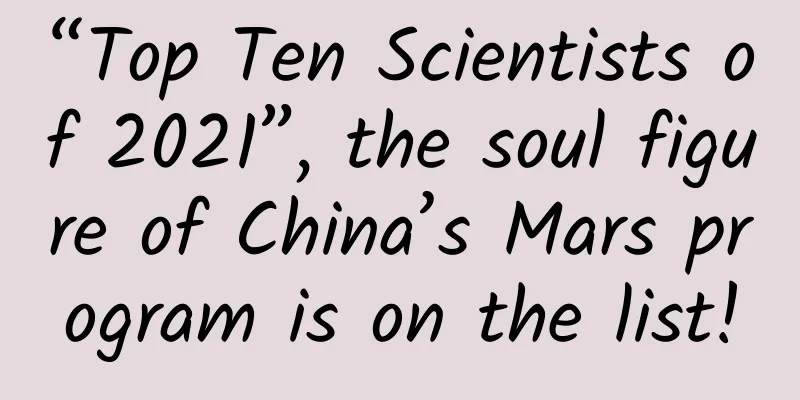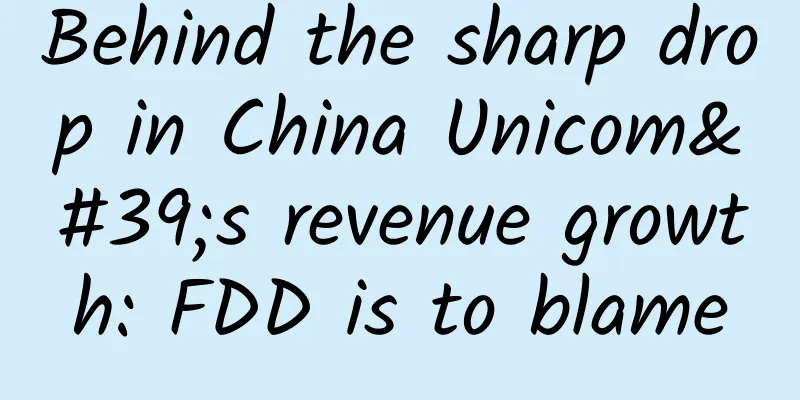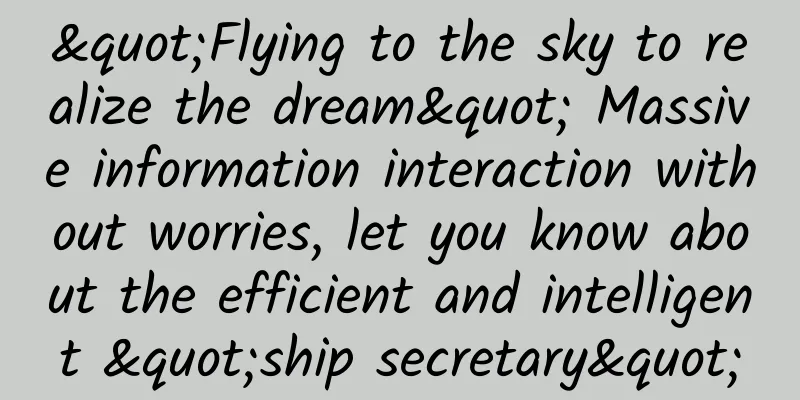“Top Ten Scientists of 2021”, the soul figure of China’s Mars program is on the list!

|
Nature Cover▲ *The pictures and characters in this article are from Nature Today, the top scientific journal Nature announced its 2021 list of Nature's 10 - a list that aims to select 10 people who have a place in all major scientific events of the year. “From tracking dangerous coronavirus variants to proving the role of climate change in extreme weather and sending rovers to Mars, this year’s Nature 10 highlights the individuals at the center of important scientific events that have had a profound impact on the world,” said Rich Monastersky, Nature’s features editor. Last year, Li Lanjuan, Tedros, Anthony Fauci, Zhang Yongzhen and others were listed for their outstanding contributions to the COVID-19 pandemic. Like last year, many of the stories of this year's top ten figures in Nature are also related to the COVID-19 pandemic. 2021 is also a year of frequent climate disasters. Wildfires, floods, and heat waves have hit many parts of the world, making climate change a major scientific issue. Countries are exploring how to combat global warming and its impacts by strengthening an international agreement. Climate scientist Friederike Otto and former UN Special Rapporteur on the Human Rights of Indigenous Peoples Victoria Tauli-Corpuz were listed for their initial outstanding contributions in this field. At the same time, this year's major scientific events also include "China became the second country to successfully land a rover on Mars", which is also the perfect answer given by Zhang Rongqiao, chief designer of the China National Space Administration and the Mars exploration mission. Since last year, Chinese people have appeared on this list again. In addition, this list also focuses on breakthroughs in artificial intelligence technology, ethical issues and academic fraud. Monastsky concluded: “The stories of Nature’s 10 people of the year provide new perspectives on the major advances, issues and controversies that have profound implications for science and resonate around the world.” The characters in this article are based on Nature reports and authoritative public information. Academic headlines may have omissions, and we welcome your comments and criticisms. 01 Vaccine warrior Winnie Byanyima: The world needs a coronavirus plan “The UN leader knows that vaccine equity will not be achieved without a fight.” Winnie Byanyima is Executive Director of UNAIDS and Under-Secretary-General of the United Nations. She is a leader on women’s rights, democratic governance and peacebuilding. Ms Byanyima believes healthcare is a human right and was an early advocate for the idea that the COVID-19 vaccine should be freely available to anyone, anywhere. Even before COVID vaccines became available, Byanyima knew distributing them equitably would be a challenge. In early 2019, she was one of a handful of voices warning that low- and middle-income countries couldn’t rely on donations alone to vaccinate their people. The only way to make lifesaving vaccines available to everyone, she argued, was to help as many companies as possible make them and set up distribution systems to get them to where they were needed. But that didn’t happen. Companies developing Covid-19 vaccines, such as Pfizer and Moderna, held on to intellectual property, while wealthy countries snapped up most of the doses. “The idea that you can sell life-saving health technology like a luxury handbag is not normal… that’s how we should describe it: unethical, greedy and wrong,” she said. Byanyima co-founded the People’s Vaccine Alliance to change that mindset. Its strategy is to enlist powerful leaders and present them with carefully tailored arguments that support for vaccine equity will advance their own goals. While there is still much work to do, Byanyima and her colleagues won an unexpected victory in May when the United States, typically a tough defender of patents, threw its weight behind a push by South Africa and India to waive intellectual property protections around Covid-19 vaccines in the hope of boosting global manufacturing capabilities. Byanyima was appointed head of UNAIDS in 2019 and has placed equity at the heart of the program’s work around the world. “Byanyima started the conversation about vaccine equity before vaccines even existed, and others are racing to catch up,” said Matthew Kavanagh, a global health policy researcher. Byanyima is working to ensure that the fruits of science change lives. “Without the political decision to reduce inequality, we will achieve nothing,” she says. Byanyima has seven names, one of which is Kyegiragire, which means “I can make myself whoever I want to be”, which she believes has shaped her approach to life. 02 Weather detective Friederike Otto: the man who put climate science “on the cusp” "As heat waves, floods and droughts intensify, this researcher assesses whether humans also bear some responsibility." Friederike Otto is a German climatologist, deputy director of the Environmental Change Institute (ECI) at the University of Oxford and a member of the World Weather Attribution (WWA). Her research focuses on how external climate drivers lead to extreme weather conditions. As heat waves, floods and droughts intensify around the world, Otto, a recognized expert in attribution studies, assesses whether humans bear some responsibility. Whenever extreme weather strikes today, people immediately wonder if climate change is to blame. This is the question Otto and her collaborators at WWA are trying to answer. Until a few years ago, scientists had a hard time answering with certainty whether climate change was to blame for specific extreme events, and how likely they were. When WWA first tried to analyze extreme events, many scientists were critical of attribution studies because they used only one or two climate models, without evaluating whether those models could reliably simulate the extreme event in question. Now, Otto and her team have developed a new strategy that uses climate simulations from up to 50 models. WWA runs hundreds of computer simulations to compare the probability of an event occurring in the world with the probability of that event occurring if humans had not increased greenhouse gases. In August, this approach was highlighted in the "bible" of climate science: the sixth assessment report of the Intergovernmental Panel on Climate Change (IPCC). In the report, the panel said that it is "an established fact" that increasing greenhouse gas emissions have led to more frequent and intense extreme weather. In response, the IPCC said: "On a case-by-case basis, scientists can now quantify the contribution of human influence to the magnitude and probability of many extreme events." Otto, the report's lead author, said the recognition was a "very, very proud" moment. “Attribution research is really important in understanding the human impacts of climate change,” says Emily Boyd, a social scientist at Lund University in Sweden who studies climate adaptation and governance. “The science is changing the way we think — it’s allowing us to think about the relationship between climate and vulnerability in completely new ways.” Otto will work with Boyd and legal scholars to examine how vulnerable groups and countries can use attribution research. Boyd said, “Science has all the potential to drive government action and promote climate justice.” 03 Mars Explorer Zhang Rongqiao: Chief Designer of China's First Mars Exploration Mission "The engineer led China's first successful mission to Mars, which in 2021 saw the probe successfully reach Mars and land on its surface." In 2021, China's Mars landing mission achieved a breakthrough, with the Tianwen-1 Mars probe successfully landing on the surface of Mars for the first time. Zhang Rongqiao is the chief designer of China's first Mars exploration mission. Zhang Rongqiao was born in Anling Town, Anhui Province in 1966. He graduated from Xidian University with a bachelor's degree in electromagnetic field and microwave technology in 1988. He received a master's degree from the China Academy of Space Technology in 1991. He is currently the chief designer of China's first Mars exploration mission "Tianwen-1" and a professor at Xidian University. Zhang Rongqiao was moved to tears when China's Mars rover landed safely on the surface of Mars on May 15, 2021. The landing marked the successful completion of a 475 million-kilometer, dangerous journey for China's space program. China had never launched a Mars rover before. Zhang Rongqiao said the success of the mission proved the saying that it takes ten years to sharpen a sword, and China became the second country after the United States to send a Mars rover to Mars. Zhang Rongqiao said that in "such a strange and complex environment", China's space program faces many unknowns. As the chief designer of Tianwen-1, he is responsible for coordinating a team of tens of thousands of people to build the Tianwen-1 probe and carry out the exploration mission. Tianwen-1 includes a Mars orbiter and a lander, and the lander also includes a Mars rover called "Zhurong". As David Flannery, an astrobiologist at Queensland University of Technology in Brisbane, Australia, said: "This is a very difficult task." The main goal of Tianwen-1 is to develop and demonstrate China's capabilities in space missions beyond the moon. Now that the probe has returned some scientific images and other results, Flannery said the real research wealth for China is coming with the next round of space exploration missions. China plans to carry out a sample return mission to the asteroid Kamoʻoalewa in 2024 and a sample return mission to Mars by 2030. At the same time, related research is also aimed at Jupiter. Researchers said Tianwen-1 has advanced China's emerging field of planetary science while also training a new generation of scientists to take on this mission. 04 AI ethics leader Timnit Gebru: "I've had a terrible year" "After leaving Google, the AI pioneer founded an independent research institute dedicated to issues of technological ethics." Timnit Gebru, a researcher who studies AI ethics, said the past year could only be described in one word: terrible. In December 2020, Timnit Gebru fell out with her employer, the tech giant Google, over an unpublished paper ("On the Dangers of Stochastic Parrots: Can Language Models Be Too Big?"), and she lost her job at Google. Gebru joined Google in 2018 and co-leads the company's AI ethics team with Margaret Mitchell. The two are known for creating a diverse environment for black and brown researchers at the company. Their team studies the potential harms of artificial intelligence, helps Google product teams think about the social risks of their technology, and supports diversity and inclusion in the field's workforce. But in late 2020, a paper co-authored by Gebru, Mitchell and outside scholars sparked a controversy. The paper criticized the impact and potential bias of large language models on the environment. And this large language model is exactly the model used by Google's search engine. Gebru was then told that Google's internal reviewers wanted her to withdraw the paper or remove the author's signature associated with Google. When she asked who made this suggestion and emailed her colleagues saying that Google was suppressing the voices of marginalized people, she found herself fired. The incident was widely reported and caused an uproar. It also heightened her concerns about anti-black discrimination in the field of artificial intelligence and the harm that technology could cause to marginalized groups in society. Her experience also won the joint support of thousands of researchers. Now, Gebru has forged her own path. On December 2, 2021, exactly 12 months after the "firing incident", she founded an AI research institute independent of large technology companies, the Distributed Artificial Intelligence Research Institute. She said that the events of the past year reflect that people have gradually realized that the mistakes of artificial intelligence should not be regarded as technical problems, but as a manifestation of the flaws in the environment in which the technology was developed. Meredith Whittaker, who studies the social impact of artificial intelligence at New York University, said the incident suddenly made people realize that Google's commitment to ethics is "insignificant." The dismissal also made people pay attention to the dependence of artificial intelligence research on corporate funding and the attitude of academia. Gebru said she had long had the idea of creating her own institute and establishing a positive model for how AI work should be done. She applied for grants from several philanthropic organizations and was awarded $3.7 million, and these dreams are finally coming true. The Distributed AI Institute will develop AI models and applications that do not rely on large data sets and computing power owned by large technology companies. The institute now has two advisory board members and two research fellows (including Gebru), and expects to hire more soon. 05 Tulio de Oliveira, virus variant tracker: pioneering a new scientific approach to epidemic response “This South African bioinformatician helped identify troubling SARS-CoV-2 variants.” On November 25, 2021, Tulio de Oliveira announced the discovery of a new variant of the coronavirus. The Omicron strain, detected in samples from Botswana, South Africa, and Hong Kong, has a horrific mutation that Oliveira and other top scientists worry may not be effective against existing prevention measures and vaccines. Oliveira is the director of the KwaZulu-Natal Research Innovation and Sequencing Platform (KRISP) in South Africa. His team discovered the beta variant of the coronavirus in South African samples in 2020. A few months later, foreign governments began to restrict travel to and from South Africa. Before doctors and lab workers discovered the new variant, they noticed an unexpected rise in infections in areas where COVID-19 had been prevalent. Oliveira knew that South Africa could be in for a tougher time if another scary variant was reported, which would hit the country again economically. But he also knew it was the right thing to do. “The way to stop a pandemic is to act quickly,” Oliveira said. “Waiting and watching is not an option.” Jeremy Farrar, director of the London-based biomedical research charity Wellcome, said the rapid identification of the Beta and Omicron variants in South Africa reinforced the importance of disease surveillance around the world. “If disease surveillance is not evenly distributed, then there is a risk that new COVID-19 variants, or even new diseases, will emerge and spread unchecked in places where disease surveillance is limited,” he said. The COVID-19 pandemic isn’t the first time genome sequencing has been used to track a virus in Africa; scientists used it during the Ebola outbreak in West Africa from 2014 to 2016. Oliveira has used the KRISP technology, which he created in 2017, to track the pathogens behind dengue and Zika, as well as more common diseases like HIV and tuberculosis. No one in Africa or around the world has ever sequenced so many different samples of the same virus in such a short time. Oliveira's work has also influenced epidemic prevention policy making. This way of working combines cutting-edge molecular technology with close contact with doctors and nurses on the front line to formulate corresponding epidemic prevention policies in real time. For example, they mapped the early outbreaks of COVID-19 in hospitals, thereby developing guidelines for ward layout to prevent the spread of the virus in hospitals. “Oliveira has done an incredible job pioneering a new way for science to respond to epidemics,” says Christian Happi, a molecular biologist at Redeemer University in Ede, Nigeria. "What we want to show the world is that these things can be done in developing countries," he said, expressing frustration when wealthy countries imposed bans on South Africa simply because a new strain of the virus had been discovered there. At the same time, some people do not understand Oliveira's approach. When the Omicron strain announcement brought new travel bans, some South Africans, including politicians, questioned Oliveira's right to make such a statement. Some people even regard the genome monitoring group as an enemy. But he said: "We are not enemies, on the contrary, we are friends standing on the front line." 06 John Jumper: AlphaFold2 changes biology “A team led by this AI researcher has released a tool that will change biology.” What would it be like if all protein structures were known? In July this year, John Jumper led the DeepMind team to publish a paper in Nature with the European Molecular Biology Laboratory's European Bioinformatics Institute, open-sourcing its AlphaFold 2 model based on deep learning neural networks. In the paper, his team predicted almost all protein structures of humans and 20 other model organisms, a total of about 250,000. Nature quoted Tobin Sosnick, a biophysicist at the University of Chicago, as saying: "It (AlphaFold2) will completely change modern biology." The career of this handsome British man born in the 1980s is full of drama. In 2007, John Jumper studied for a doctorate in condensed matter physics at Cambridge University, but within a year he realized that this was not the subject he was really interested in. So he took his master's degree from Cambridge University and joined the world's "most luxurious" molecular dynamics institute, which is DE Shaw Research Institute of hedge fund tycoon DE Shaw, to work on computer simulation of proteins. "When I first went there, I didn't even know what protein was," he said. In 2011, John Jumper began to pursue a doctorate and postdoctoral degree in theoretical chemistry at the University of Chicago. It was during this period that he began to use machine learning technology to study protein dynamics. Three years after graduating from his postdoctoral position, Jumper led his DeemMind team to a blockbuster success at the protein structure prediction competition CASP14. The first generation of AlphaFold predicted the distances between the various parts of the target protein based on neural network technology, using a method similar to other teams. However, Jumper has greater ambitions. He hopes that AlphaFold2 will completely reform the underlying neural network and provide scientists with more reliable predictions. In the next year, Jumper hopes to publish the structures of nearly half of the known proteins, totaling 130 million, with his team. When asked about his dream, Jumper said: "My dream is to do something useful." 07 Victoria Tauli-Corpuz: A champion of indigenous lands “A former Aboriginal leader is helping Aboriginal people gain international recognition for protecting biodiversity and climate.” For decades, Victoria Tauli-Corpuz, an indigenous leader from the Philippines, has been campaigning for the rights of indigenous peoples around the world. At this year’s COP26 UN Climate Change Conference, developed countries and philanthropies pledged $1.7 billion to help indigenous peoples around the world protect forests and biodiversity to prevent global warming. This is a historic moment for indigenous peoples around the world, and this investment is largely due to Victoria Tauli-Corpuz. From 2014 to 2020, Tauli Corpuz travelled to indigenous communities around the world as a UN Special Rapporteur to discuss the challenges they face on the ground. In an influential report submitted to the UN in 2016, she revealed how models such as national parks and nature reserves risk infringing on indigenous land rights. Born in a small village in the Philippines without electricity, Tauli Corpuz has experienced the relationship between indigenous peoples and forests more personally than any other UN official. Over the past 35 years, she has provided a scientific and powerful critique of the fortress conservation model, which argues that nature can only be conserved if it is isolated from humans. “This thinking must change because forests, which hold most of the biodiversity and carbon on Earth, are also home to the world’s indigenous peoples. People live in these forests and we should work with them,” said Tauli Corpuz. “The world is finally catching up, and so is science,” said David Kaimowitz, an economist at the United Nations Food and Agriculture Organization. He explained that peer-reviewed research on indigenous lands has only been done in the past five or ten years. The literature provides data showing that indigenous lands act as a protection and buffer against environmentally harmful activities such as mining, damming and deforestation. 08 Guillaume Cabanac: Fighting against unreliable academic papers "This computer scientist helped uncover a covert fraudulent paper." Peer-reviewed academic articles are supposed to be among the most rigorous forms of writing humans can produce, but even here there are still oddballs in the literature, and Guillaume Cabanac, a computer scientist at the University of Toulouse in France, set out to find them all. Cabanac began his work on academic fraud in 2015, when he teamed up with computer scientist Cyril Labbé of the University of Grenoble Alpes in France to develop a program that could identify unreliable computer papers automatically generated by SCIgen. The software was originally used for fun, but many people actually submitted papers generated by it. Their work led to journals retracting more than 120 manuscripts. So far, Cabanac and his anti-fraud partners from PubPeer have accurately found nearly 400 strange phrases that were machine-generated or machine-translated in more than 2,000 papers, and publishers include well-known Elsevier, Springer and Nature. Labbé said: "Cabanac is very frustrated by the behavior of academic papers, and he is really willing to stop these things from happening at all costs." First, these strange phrases must be discovered by a person, and then researchers search the Dimensions system to find papers that contain it. Cabanac and his assistants then need to manually scan each article to weed out false positives. Ultimately, he wants to develop a program that can automatically identify these phrases to clean up the academic environment of scientific papers. But he knows it won't be easy: "I'm worried that new technology will help fraudsters publish papers with errors. It's a crazy game, and we need to be prepared." 09 Meaghan Kall: Epidemiologist who criticized UK's epidemic prevention policy on Twitter "A government epidemiologist broke the rules and interpreted UK coronavirus data on Twitter." On the afternoon of January 8, 2021, British government epidemiologist Meaghan Kall completed a technical briefing on the coronavirus in southeast England. Half an hour later, she posted a post on Twitter analyzing the key points of the report. This behavior was risky for Meaghan. Because she did not get permission from her boss, she did not even write a report. But soon Meaghan's series of tweets became a window for people to understand the technical issues of the new coronavirus. In September, Kall wrote on Twitter: "As a public servant, I have limited space to speak the truth." When her family had to isolate for testing, Kall also posted photos of them on her Twitter account and invited members of the public who had concerns about the vaccine to leave her a private message. Kall said her boss neither banned nor encouraged her to tweet, although her colleagues were supportive, and that this open and transparent communication enhanced people's trust in the UK government's data. Of Kall’s more than 6,000 tweets about the coronavirus, the most popular are her public criticisms of the UK government’s epidemic prevention policies, especially the decision to privatize most virus testing and tracking. Before studying the new coronavirus, Kall spent a decade monitoring HIV infections for British government agencies and can be said to be an expert in infection tracking. She said: “I actually just want to make sure that people have the power they deserve and have reliable channels to understand the scientific data and then make their own decisions.” 10 Janet Woodcock: Controversial FDA Commissioner “This career executive has led the nation’s most important drug agency through a challenging year.” Soon after taking office this year, US President Joe Biden appointed Janet Woodcock as the Commissioner of the US Food and Drug Administration (FDA). Obviously, this appointment has caused controversy. 82 rare disease patient advocacy organizations praised her leadership, especially her listening to patients' voices in drug approval decisions. On the other hand, 31 organizations expressed their doubts very bluntly, believing that Janet Woodcock was partly responsible for regulatory failures in the US opioid crisis. Janet Woodcock is a former physician. She spent much of her 35-year career at the FDA at the Center for Drug Evaluation and Research, which is responsible for ensuring the safety and effectiveness of drugs before they enter the U.S. market. Under Woodcock's leadership, the center gradually modernized the drug evaluation process, introducing advanced clinical trial design and drug approval pathways supplemented by sophisticated diagnostic tests. She also advocated for patients and their advocates to play a greater role in the approval process. However, in June, the FDA made what may be the most controversial decision ever - approving the Alzheimer's drug aducanumab. Although an FDA spokesperson said that their director was not involved in the review and approval of aducanumab, this did not save the FDA from the bloodbath. Several consultants, including Aaron Kesselheim, a doctor at Harvard Medical School, resigned in protest. This summer, the White House announced that booster shots would soon be available to the American public. But at that time, the FDA had not yet issued any guidance on booster shots. At this time, Woodcock chose to stand with Biden. This statement caused a commotion at the FDA, and two key vaccine evaluation experts resigned in protest. In November, Biden nominated former FDA Commissioner and cardiologist Robert Califf to return to the country to lead the FDA. Regarding his predecessor, he said: "In any case, Woodcock should also get some recognition for the FDA's keeping up with the times." Original link: https://www.nature.com/immersive/d41586-021-03621-0/index.html Source: Academic Headlines |
Recommend
How can medical beauty apps become internet celebrities with the help of Click-In DSP?
The health and medical beauty industry, which has...
What do I think of “Mimeng” and her articles that keep appearing on my screen?
1. Two weeks ago, I encountered an interesting th...
10 common methods to improve UI details and experience
If you think your UI design is boring and want to...
2021 Data Analysis Practice, Getting Started with Data Analysis from 0 Basics
2021 Data Analysis Practice, Getting Started with...
Use it to clean up WeChat and save 10G space in minutes
PC WeChat and mobile WeChat have always been the ...
Operation and promotion: Thoughts on the 3-fold growth of App users
Scenario—Creativity—Benefit Point—Cycle—Channel, ...
A complete set of APP message push mechanism!
How does the app implement a push mechanism? Whic...
Analysis of Tmall Double 11 event operations in 2019!
This article attempts to analyze the overall game...
The Handbook of Life Counterattack
The Handbook of Life Counterattack Thinking Selec...
I really didn't expect that this would be easy to use when traveling.
During holidays, if you want to travel, visit sce...
Eating Enoki mushrooms in a cycle will ensure you have "blood in your urine" from dragon fruit - what's wrong with these foods!
There is a type of food that is jokingly called &...
Wang Zhao SEO video training tutorial, SEO novice training tutorial!
The main content of the video training tutorial r...
Brand promotion: How to do low-cost marketing?
When it comes to "low-cost marketing" ,...
How to write the copy for Qingming Festival?
When we think of Qingming What other associations...
A 10,000-word analysis of brand growth
The past two years have seen an explosive growth ...









